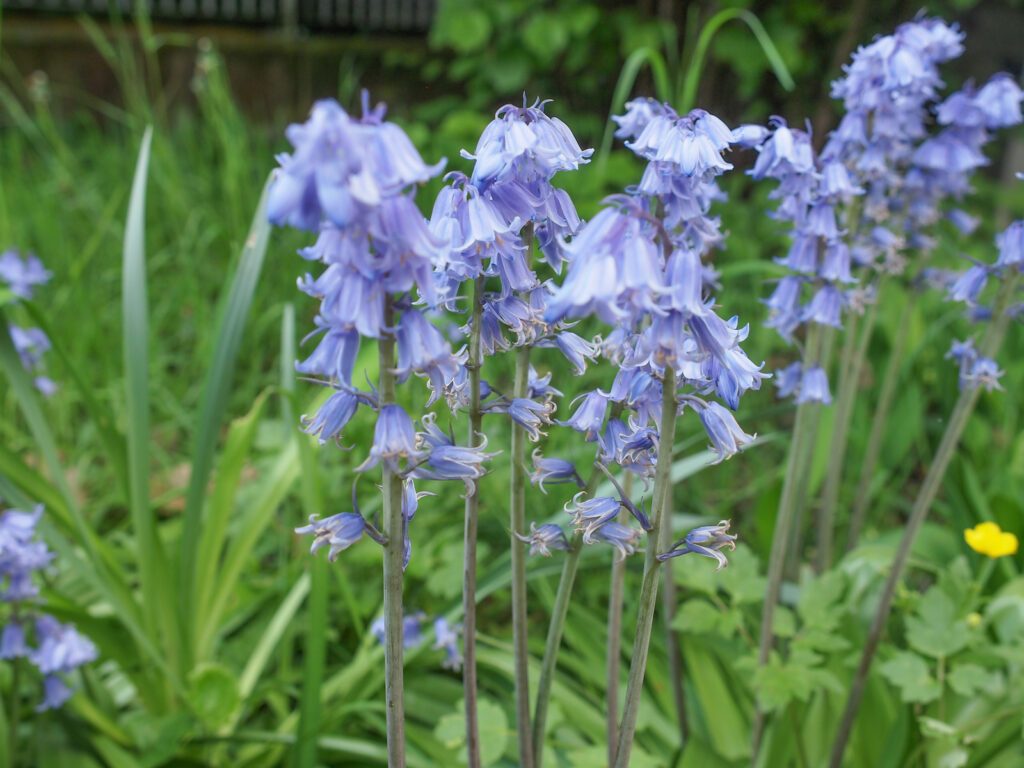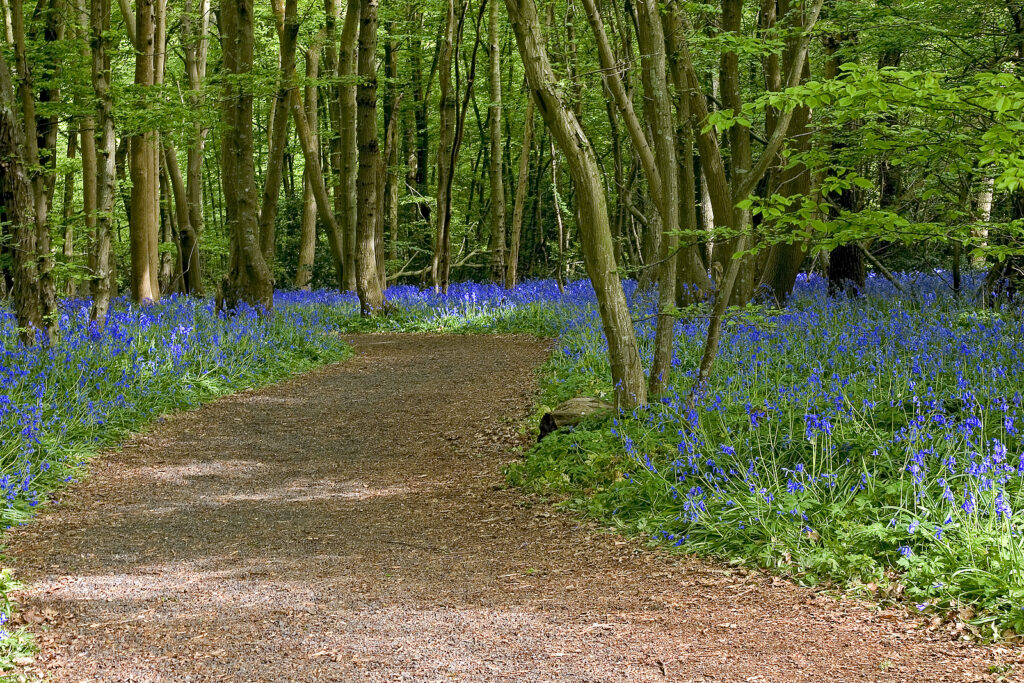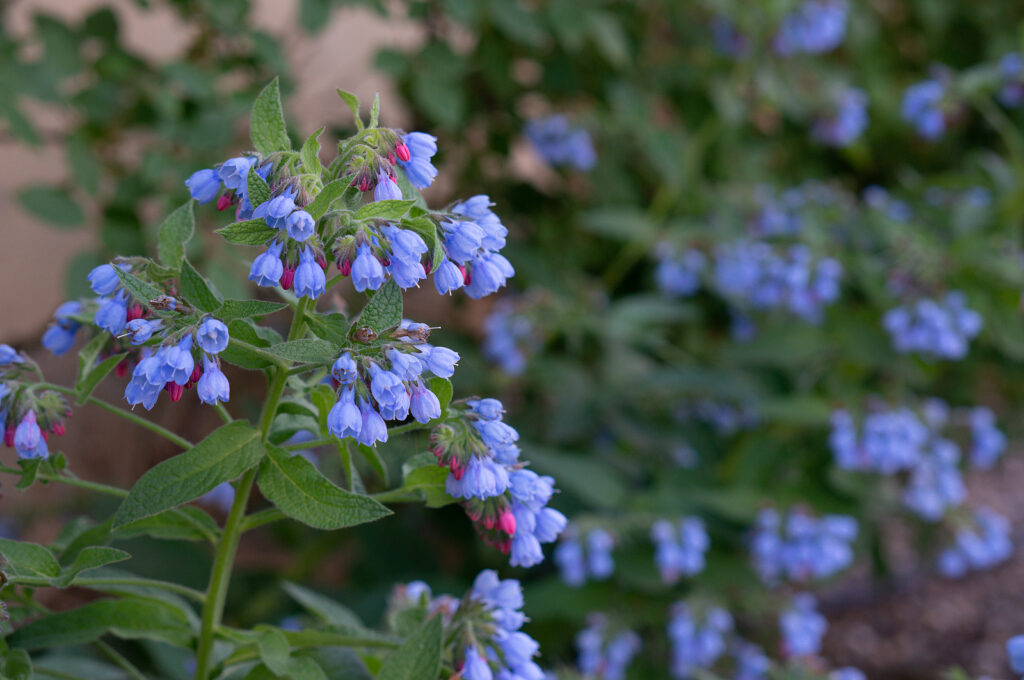Mertensia — commonly called Virginia bluebells–bears loose clusters of pendent, bell-shaped or tubular flowers. Blooms commonly come in shades of blue to purple, as well as white and sometimes pink.
Smaller species of Mertensia are suited for gravel beds and rock gardens. Larger ones can be planted in perennial borders or woodland gardens. Mertensia grows best in moist, well-drained soil in light dappled shade.
There are about 50 species in the Mertensia genus. Species are native to wet meadows and woodlands, and coast in Europe, Asia, North American, and Greenland. About half of the species are native to North America.

Get to know Mertensia
- Plant type: Perennial.
- Growing zones and range: Zones 3 to 7.
- Hardiness: Hardy to -35°F (-37°C)
- Height and width: 1-2 feet (.3-.6m) high.
- Foliage: Bluish-green leaves form loose clumps that send up leafy, 1.5-2 feet (.5-.6m) tall stems.
- Flowers: Clusters of small, 1 inch (2.5cm), ball-like buds bright reddish-purple and become deep blue in full bloom, so the plants appear to have two different kinds of flowers at once; flowers have five lobes and rounded lance-shaped leaves.
- Flower color: Blue
- Bloom time: Early spring
- Uses: Border under deciduous shrubs or trees, or wildflower garden, or woodland garden.
- Garden companions: Late-blooming daffodils, such as ‘Actaea,’ charming with naturalized daffodils or with ferns, trillium, or bleeding heart.
- Common name: Virginia bluebells
- Botanical name: Mertensia
- Family name: Boraginaceae
- Origin: Coasts in Europe, Asia, North America, Greenland
Where to plant Mertensia
- Plant Mertensia where it can get spring sunshine and light summer shade; perhaps under a deciduous tree.
- Plant Mertensia in moist, well-drained, humus-rich soil.
- After blooming, Mertensia dies back for the summer, so mark the spot with a stake if you intend to dig in the area or move or divide the plants later.
Mertensia uses and companions
- Grow larger Mertensia in an herbaceous border or woodland garden.
- Grow smaller species in a rock garden.
- Naturalize Mertensia in a moist shade garden, woodland garden, and along streams and ponds. Interplant Mertensia with ferns to cover bare spots in late in midsummer.
- Good garden companions include Dicentra, Doronicum, Hosta, Primula, Pulmonaria, Trillium, Trollius.

When to plant Mertensia
- Plant Mertensia seed in the fall.
- Set out container-grown plants in spring or fall.
- Mertensia appears and flowers in early spring. Mertensia dies to ground soon after going to seed.
Planting and spacing Mertensia
- Space Mertensia 10 to 12 inches (25-30cm) apart.
- Sow seed 1/8 inch deep in evenly prepared soil.
- Use summer annuals to fill the void after Mertensia plants die back.
How to water and feed Mertensia
- Give Mertensia regular water.
- Fertilize Mertensia with an all-purpose organic fertilizer in spring.
Mertensia pests and diseases
- Mertensia can develop leaf spot, mildew, or rot.
- Mertensia can be attacked by slugs.

Mertensia propagation
- Divide Mertensia in early spring or fall.
- Mertensia clumps can be left in place indefinitely. They will slowly spread.
- To get more Mertensia plants, use volunteer seedlings or dig and divide clumps in early fall.
- Plants self-sow and seedlings are easy to move in spring.
- Mertensia seeds germinate in 4 to 6 weeks at 64° to 72°F (18°-22°C); refrigerate seeds for 4 to 6 weeks before sowing.
Mertensia varieties to grow
- Mertensia pulmonarioides, Virginia cowslip (formerly M. virginica), a 1-2 feet (.3-.6m) tall wildflower native to the eastern half of North America that grows from fleshy white carrotlike roots and spreads to 1 foot (.3m); produces mounds of bluish-green leaves, and in spring bears nodding clusters of pink buds that open into pale lilac-blue to purple-blue .75-1 inch (1.8-2.5cm) long bells. Zones 3 to 9.















